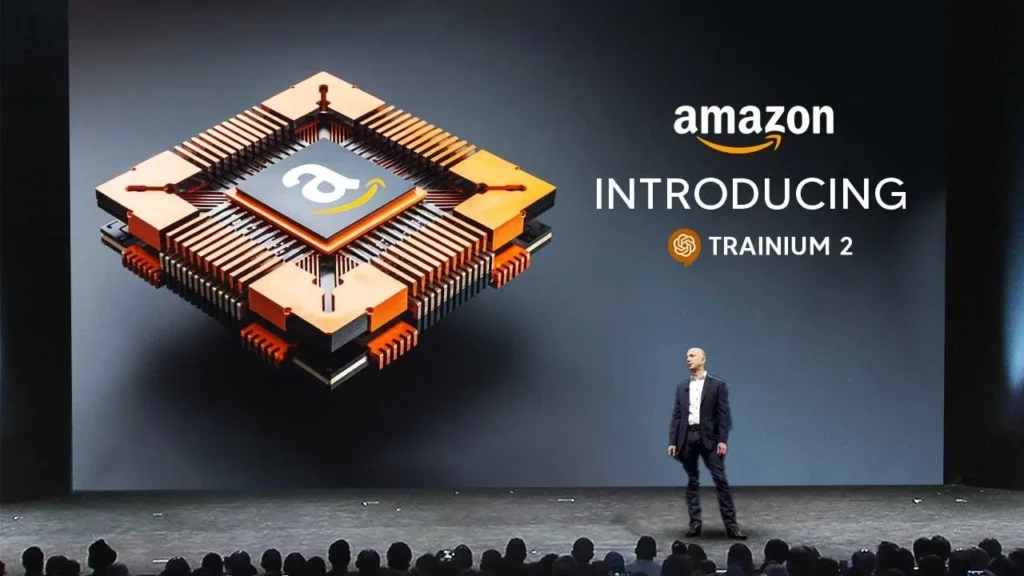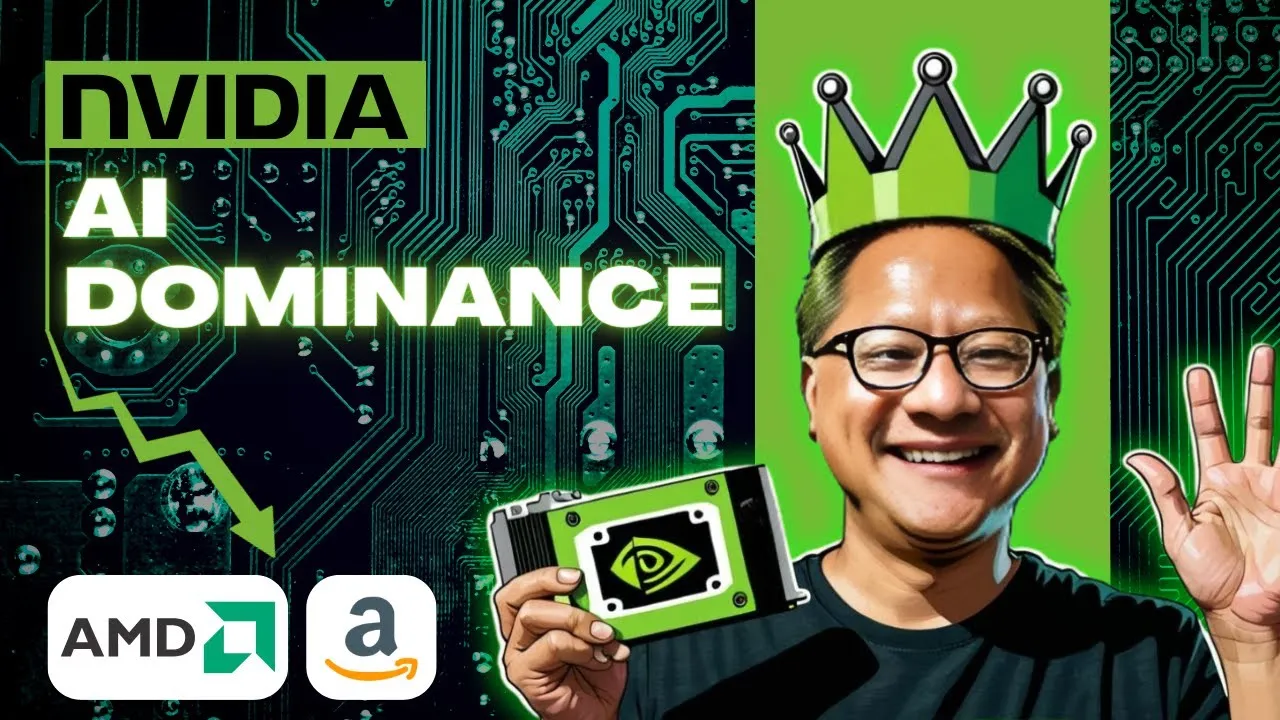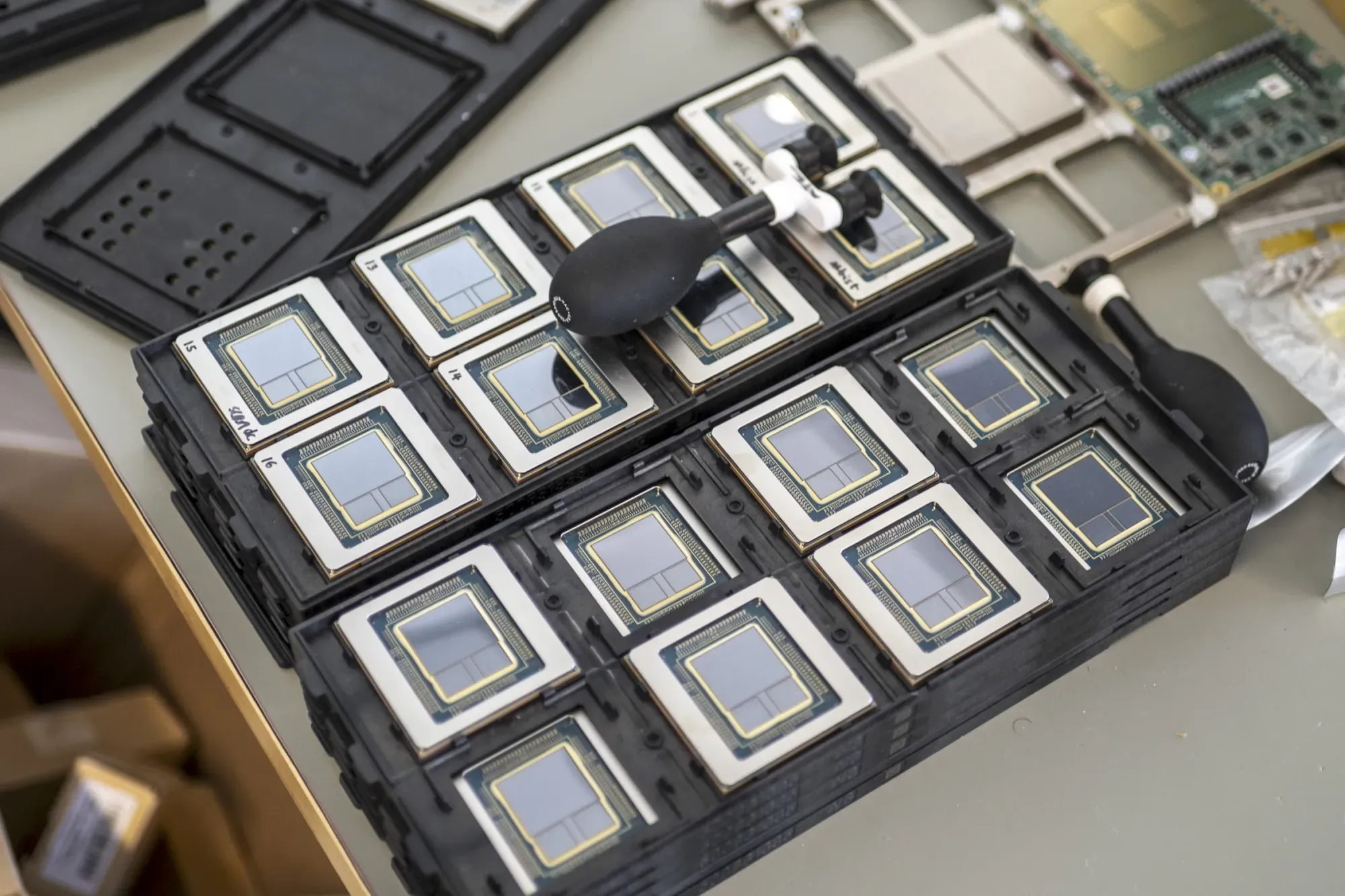
It’s been a whirlwind week for Nvidia (NVDA), the reigning champion of the semiconductor market. At its annual GTC summit, Nvidia showcased the latest in cutting-edge technology and AI-driven innovations, while giving investors a sneak peek at upcoming products. Amid all the buzz, however, Amazon (AMZN) has entered the ring, making moves that could challenge Nvidia’s dominance in the chip industry. Could this be Amazon’s checkmate moment?

Amazon Takes a Shot at Nvidia with AWS’s Trainium Chips
Amazon’s cloud division, Amazon Web Services (AWS), is no stranger to disrupting markets. AWS already powers some of the world’s most significant digital infrastructure, with its broad array of services spanning cloud computing, data storage, and even custom chipsets. Now, it appears Amazon is gearing up to shake up the semiconductor market, especially in the realm of data center GPUs, which Nvidia has long dominated.
A report from The Information reveals that AWS is ramping up efforts to compete with Nvidia by offering its Trainium chipsets. Amazon claims that these chips perform on par with Nvidia’s H100 (Hopper) GPUs but at a fraction of the price — 25% of Nvidia’s asking cost. For companies seeking cost-effective solutions, this could be a game-changer.
This pricing move could spell trouble for Nvidia, especially given its history of commanding premium prices due to a lack of serious competition in the GPU space. However, as with any major disruption, there are nuances that need to be considered before declaring Amazon’s chips a game-winning move.
Rising Competition in the Data Center GPU Market
Nvidia has enjoyed a near-monopoly in the data center GPU space for the past couple of years. However, this dominance is beginning to erode as more players enter the market. Companies like Advanced Micro Devices (AMD) have quietly made inroads with their MI300 accelerators, which are now being used by major firms like Microsoft, Meta Platforms, and Oracle.

The shift toward custom silicon solutions from cloud providers like Microsoft, Meta, and Alphabet, who are working on their own chip designs, further compounds the pressure on Nvidia. As these tech giants reduce their reliance on Nvidia’s products, it’s clear that the semiconductor giant’s pricing power is facing serious challenges.
With AWS’s aggressive pricing strategy and alternative chip offerings from AMD, Nvidia is finding itself in a situation where it must rethink its approach. As pricing pressures increase, Nvidia will likely need to find ways to remain competitive without sacrificing its profit margins.
Nvidia’s Response: Innovation and Strategic Marketing
Despite Amazon’s attempts to disrupt Nvidia’s market share, Nvidia is not backing down. In fact, the company is ramping up innovation at an astonishing pace. During the GTC summit, Nvidia CEO Jensen Huang made a bold statement about the company’s next-generation chip architecture, Blackwell, and its successor, Rubin.
While discussing the Hopper chips, Huang humorously dubbed himself the “chief revenue destroyer,” alluding to the fact that the technology was already becoming outdated in the fast-paced world of AI development. He noted, “There are circumstances where Hopper is fine. That’s the best thing I could say about Hopper. There are circumstances where you’re fine. Not many.”
This wasn’t just a throwaway comment; it was a strategic way to highlight the superiority of Nvidia’s upcoming Blackwell chips. In essence, Huang was positioning Blackwell — which generated a whopping $11 billion in sales during its fourth-quarter debut — as the future of AI and data center processing.
Nvidia’s rapid innovation cycle is something that sets it apart from its competitors. While some businesses may opt for AWS’s cost-effective Trainium chips or AMD’s alternatives, Nvidia’s focus on next-gen architectures like Blackwell and Rubin could provide the technological edge needed to keep its leadership intact.
Is Amazon’s Strategy Enough to Dethrone Nvidia?
While Amazon’s Trainium chips and AMD’s MI300 accelerators are noteworthy competitors, it seems unlikely that these will be the death knell for Nvidia in the long run. As the leader in AI-driven chip technology, Nvidia continues to innovate at a pace that others struggle to match. Its Blackwell and Rubin architectures are poised to power the next generation of AI applications, from machine learning to natural language processing.
That said, Amazon’s entry into the chip market, particularly with its aggressive pricing strategy, will likely cause Nvidia to rethink its approach. Pricing pressure is a reality in the tech world, and Nvidia will need to stay ahead of the curve by maintaining its competitive edge in terms of both performance and cost-effectiveness.

A Long Game, Not a Checkmate
In the high-stakes world of semiconductors, Amazon’s move to challenge Nvidia with its Trainium chips is certainly a bold one. However, it’s unlikely to deal a fatal blow to Nvidia’s reign in the data center GPU space. With a relentless focus on innovation and next-generation technology, Nvidia seems well-positioned to navigate these competitive pressures.
While businesses may choose to adopt alternative chipsets, Nvidia’s cutting-edge architectures, combined with its strong brand and track record, ensure that it remains a formidable player in the market. So, for now, it’s not checkmate — it’s just another round in a long game.
